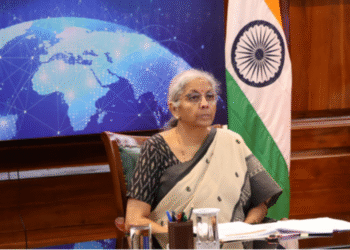Change in the prices of goods and services has a tangible impact on every section of the economy. Over time, the increase in the cost of commodities adversely affects the purchasing power of consumers and businesses. This, in turn, impacts a country’s economy as a whole. Simply put, you cannot buy the same things today at Rs 100 that you could a decade ago. This overall increase in prices that reduces the purchasing power of your currency is known as inflation, and it is measured as an annual percentage.
Calculating inflation in Indian economy
Inflation in the Indian economy is determined based on parameters such as the consumer price index (CPI) and the wholesale price index (WPI). The consumer price index measures retail inflation in India, while the wholesale price index measures the change in the prices of goods at a wholesale level. Both measures consider monthly changes in prices and help determine inflation.
They are essential metrics for the Reserve Bank of India to assess inflation and find the best possible ways to address it.

Glimpse of inflation in India
Over the years, inflation in the Indian economy has seen several milestones. In the 1960s, the country recorded double-digit inflation rates due to the 1965 and 1966 twin droughts. Then, the 1980s saw a rise in inflation due to expansionary fiscal policies and the government’s decision to print more currency to bridge the fiscal gap.
The 1990s also witnessed a severe economic crisis resulting in 13.9% inflation. Reforms were introduced to counter the situation and the inflation rate fell over the next decade. The global economic slowdown of 2008 did not affect inflation in India, with average inflation between 2008 and 2013 touching 10.1%. The increase in crude oil prices in 2009 and 2010, however, did briefly lead to double-digit inflation rates.
More recently, inflation in the Indian economy saw a fall in 2014 thanks to demonetisation and implementation of GST measures. However, the Covid-19 pandemic has impacted the global economy, including India, in the last two years and affected inflation rates.
Current inflation in Indian economy
In 2022, inflation in the Indian economy has stayed above the RBI’s upper threshold of 6% so far (till October).
As per data, the CPI in October 2022 was recorded at 6.77% – the lowest in three months. The values were 7% and 7.41% in August and September, respectively. The WPI also decreased significantly compared to the previous month, falling from 10.7% to 8.39%.
India saw a rise in inflation rate in the aftermath of the pandemic and geo-political issues such as the Russia-Ukraine conflict. The high inflation rate in the Indian economy can be attributed to global supply-chain disruption and a steep increase in crude oil prices and other commodities globally, due to the aforementioned factors. Since imports fulfil 85% of India’s crude oil needs, the global rise in energy, transport, and labour prices has enormously impacted the economy.
Way ahead
The Reserve Bank of India has projected retail inflation at 6.7% and real GDP growth at 7% for 2022-23. The RBI has increased the repo rate to 4.4% to combat inflation in the Indian economy.
The government has been leveraging 5G technology and digitisation to tackle the rising inflation rates in India and promote trade, manufacturing, and ease of business. Several policies like the National Logistics Policy and welfare measures – such as fertiliser subsidies – focussed on improving manufacturing, generating employment and encouraging investments in India have also been introduced to improve the state of the economy.








